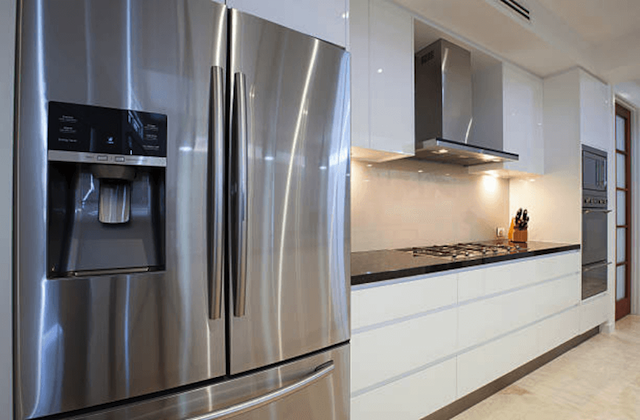Why is My Refrigerator Ice Maker Not Working?

Cooper Appliance Repair provides refrigerator repair service, including services to fix broken ice makers. Learn about common ice maker problems below:
Ice makers are perhaps one of the best inventions of all time. This is a little luxury many people not appreciate. Ice makers are simple machines that don’t feature a lot of complicated components that might go wrong with them.
As with any repair, there are some basic things that need to be looked at before assuming the worst. And, remember, if necessary, you are able to replace an ice maker without replacing an entire refrigerator, dependent on the brand and model. First, let’s discuss some of the causes for an ice maker breaking.
When an ice maker is making ice but it isn’t ejecting the ice cubes it is usually means there is a mechanical problem opposed to an electrical failure. This occurs when shifting things around in the freezer, you accidentally shift the control lever up or down. Often the ice maker can be blocked with something, possibly a piece of ice. So, look to see if there’s ice or food blocking this from working correctly.
Before beginning the steps of clearing out the freezer, be sure your ice maker is turned on. This can be done by pulling the control arm in the down position. From time to time, moving food around in the freezer unit might put the control in the off position. If the the switch is clear, then there might be food stuck inside the ice maker or it is not getting a good connection.
Check the Control Arm
When the control is down and there is ice but it is not dispensing it, there could be a mechanical or electrical issue. This is going to need a bit more diagnosing. Ready to get started? First, we need to check the electrical connection. This can become unplugged from behind the freezer when moving or shifting the food in the freezer.
To inspect this, unplug the fridge and slide it out from the wall. Turn off the freezer’s water supply valve. Locate the connection on the back of the inside of the freezer unit. Essentially this is what plugs the ice maker into the freezer unit. Be sure that it is actually plugged in properly.
Then, remove all of the ice that is inside of the ice maker. This can be done by pouring in a little water to help get the ice that’s inside of there out.
Once complete, restore power to the refrigerator and then turn on the ice maker. It could take the solenoid component a couple of seconds to react and fill the mold. Once the mold is 100% full, wait 4-5 hours or so to see if you have solved the issue.
Check for Frozen Lines
More ice maker failures that can cause your ice maker to not make ice are frozen lines. The water lines could be blocked with frost. This is an easy fix.
First, unplug the fridge and find the water shut off valve. Turn the water off and get a hair dryer to heat up the line or let the fridge sit turned off for a couple of hours until the line is thawed.
There are some brands and models that have a water filter that can clog or ice over. In these situations, finding the water filter is the first step. Then repeat what was done for the frozen water line.
When your ice maker is not making big enough cubes of ice, there’s an issue with the settings. To adjust the settings, take the top part of the cover off and find a standard control that has plus and a minus signs. To do this, you may need a flat head screwdriver.
ADDITIONAL REFRIGERATOR RESOURCES
- Refrigerator Noisy
- Refrigerator Water Dispenser Not Working
- Refrigerator Not Cooling
- How Does a Refrigerator Work?
Home Services Campaign Disclaimer: This site is a free service to assist homeowners in connecting with local service providers. All contractors/providers are independent and this site does not warrant or guarantee any work performed. It is the responsibility of the homeowner to verify that the hired contractor furnishes the necessary license and insurance required for the work being performed. All persons depicted in a photo or video are actors or models and not contractors listed on this site.
Copyright ©2025 | Cooper Appliance Repair
